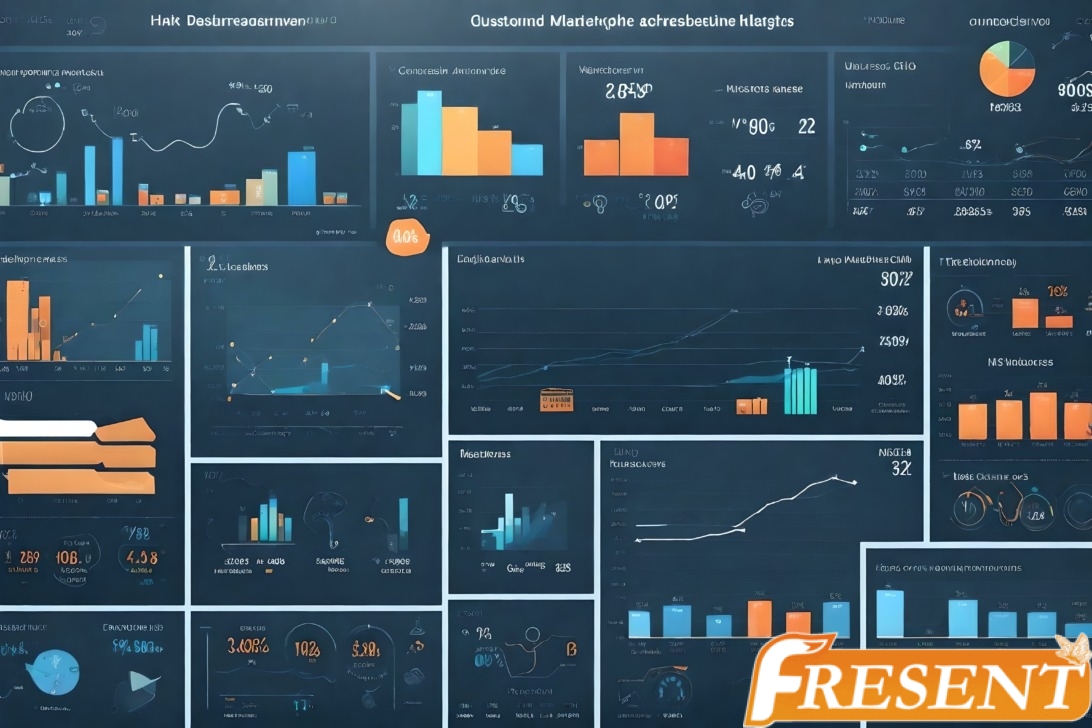SaaS (Software as a Service) has revolutionized the way businesses operate and interact with their customers. It is a cloud-based model that enables users to access software applications through the internet, without the need for installation or maintenance of any hardware or software. As SaaS continues to grow in popularity, it becomes increasingly important for SaaS businesses to measure their performance using key metrics that reflect the health of their business and help them make informed decisions.
In this article, we will explore some of the most critical metrics that matter for SaaS businesses. These metrics are essential because they provide insights into different aspects of a SaaS company – from revenue generation to customer acquisition and retention. By understanding these metrics and tracking them regularly, SaaS companies can optimize their operations, improve profitability, and build sustainable growth strategies. We will delve into each metric in detail to help you understand how they work, what they mean for your business, and how you can leverage them to drive success.
Monthly Recurring Revenue (MRR)
The Monthly Recurring Revenue (MRR) metric is a vital indicator for gauging the financial health and growth potential of Software-as-a-Service (SaaS) businesses. MRR measures the recurring revenue generated by a SaaS company on a monthly basis, which includes subscription fees, upgrades, and add-ons. It provides insights into how much revenue can be expected each month, allowing businesses to plan their resources accordingly.
To achieve sustainable growth, SaaS companies need to implement effective MRR growth strategies. These may include upselling existing customers with complementary products or services, offering discounts for longer-term contracts, or expanding into new markets. In addition to these strategies, MRR forecasting techniques are essential for accurately predicting future revenues and identifying potential areas for improvement.
MRR is an essential metric that provides valuable insights into the financial performance of SaaS businesses. By implementing effective MRR growth strategies and utilizing reliable forecasting techniques, companies can increase their recurring revenue and achieve sustainable growth over time. The next key performance indicator that complements MRR is customer acquisition cost (CAC), which will be discussed in the subsequent section.

Customer Acquisition Cost (CAC)
Acquiring customers can be costly, but calculating the cost of customer acquisition is crucial for improving business efficiency. Customer Acquisition Cost (CAC) refers to the amount of money spent on acquiring a new customer. This metric allows SaaS businesses to determine how much they are spending on each new customer and helps them identify ways to optimize their CAC.
To optimize CAC, SaaS businesses can implement various strategies such as targeting specific demographics, leveraging social media marketing, and using referral programs. Another effective way to improve CAC is by conducting a CAC vs LTV analysis. The Lifetime Value (LTV) of a customer represents the total revenue that a business expects to generate from that customer over the course of their relationship. Comparing CAC and LTV enables SaaS businesses to determine if they are acquiring customers at an acceptable cost relative to the revenue those customers will generate.
Understanding and optimizing CAC is essential for SaaS businesses looking to maximize profitability. By analyzing this metric along with other important metrics like churn rate, companies can better understand their overall financial health and make data-driven decisions regarding their future growth strategies.
Next up in our discussion on Saas Metrics That Matter: Key Performance Indicators for Saas Businesses, we will delve into ‘churn rate’ – another critical metric that affects the bottom line of any SaaS company.
Churn Rate
Measuring the rate at which customers leave a company’s services, known as churn rate, provides insight into customer satisfaction and retention. Churn rate is a critical metric for SaaS businesses because it directly affects revenue growth and profitability. A high churn rate indicates that customers are dissatisfied with the product or service being offered, resulting in lost revenue and increased Customer Acquisition Costs (CAC) to replace those lost customers.
Churn prevention strategies can help reduce churn rates by improving customer satisfaction and retention. These strategies include improving the onboarding process, providing excellent customer support, delivering regular product updates, and offering loyalty programs or incentives to retain existing customers. Additionally, monitoring key performance indicators such as Net Promoter Score (NPS), Customer Lifetime Value (CLV), and Customer Satisfaction (CSAT) scores can provide valuable insights into customer behavior and preferences.
The impact of pricing on churn rate cannot be overstated. Overpriced products or services may lead to higher churn rates as customers may feel that they are not getting enough value for their money. On the other hand, underpricing may result in unsustainable profit margins that could negatively affect the business’s ability to invest in growth opportunities. Therefore, finding the right balance between pricing and value is crucial for reducing churn rates while maintaining healthy profit margins.
As we move onto discussing gross margins in SaaS businesses, it is essential to note that this metric is closely related to churn rate since maintaining low levels of churn leads to higher retention rates and ultimately better gross margins.
Gross Margins
Gross Margins, a vital metric for SaaS businesses, are the difference between revenue and cost of goods sold expressed as a percentage. It is an essential financial indicator to measure the company’s profitability and helps in determining the product pricing. Benchmarking Gross Margins against industry standards provides insights into how well a business is performing compared to its peers, while analyzing them over time highlights areas where improvement is necessary. Improving Gross Margins can lead to increased profitability and better positioning in the market.
Calculation and Importance
The calculation accuracy of SaaS metrics is crucial for making informed decisions about the health and growth potential of a SaaS business. For instance, gross margin, a vital metric that measures profitability, can be calculated by subtracting the cost of goods sold from total revenue and dividing by total revenue. The accuracy of this metric depends on accurately accounting for all costs related to delivering the software as a service. Inaccurate calculations could lead to misleading data that hinders the growth potential of the business.
Furthermore, industry comparison is essential when assessing SaaS metrics such as gross margin. Comparing a company’s gross margin with other companies in its industry helps identify areas where it may need improvement or where it is excelling. Industry benchmarks provide insight into what is typical or expected within an industry and can highlight problems or opportunities for improvement. By benchmarking their performance against others in their industry, businesses can identify gaps in their processes and make data-driven decisions to improve their operations and increase profitability without compromising customer satisfaction.
Benchmarking and Improvement
Benchmarking against industry standards can reveal opportunities for improvement and growth, allowing businesses to make data-driven decisions that increase their profitability and competitiveness. By comparing key performance indicators (KPI) such as customer acquisition cost (CAC), churn rate, and lifetime value (LTV) with those of similar companies in the same industry, Saas businesses can identify areas where they are underperforming and take steps to improve. For example, a Saas business may discover that its CAC is significantly higher than the industry average, indicating inefficiencies in its sales and marketing processes. By addressing this issue, the company can reduce its costs while increasing revenue.
Competitive analysis is another important aspect of benchmarking. By monitoring the KPIs of direct competitors, Saas businesses can gain insights into market trends and adjust their strategies accordingly. For instance, if a competitor’s LTV is higher than theirs, they may need to re-evaluate their pricing model or improve customer retention efforts. Tracking progress over time allows businesses to measure the effectiveness of any changes made and identify further opportunities for improvement. Ultimately, benchmarking against industry standards provides Saas businesses with valuable information that helps them stay competitive in an ever-evolving market.
As we move on to discuss average revenue per user (ARPU), it’s important to note how benchmarking against industry standards plays a crucial role in determining this metric as well.

Average Revenue per User (ARPU)
One crucial metric to consider when evaluating the financial performance of a SaaS business is Average Revenue per User (ARPU), which measures the average amount of revenue generated by each customer. Calculated by dividing total revenue by the number of active users, ARPU can provide insights into how much value a company is delivering to its customers and how effectively it is monetizing its user base. Higher ARPU typically indicates that a company is generating more revenue from each customer and has a better ability to cover its costs and invest in growth.
There are several ways for SaaS businesses to increase their ARPU. One approach is to develop pricing strategies that encourage existing customers to upgrade their accounts or purchase additional products or services. For example, offering premium features or exclusive content can entice users to pay more for their subscriptions. Another way to boost ARPU is by increasing retention rates, as longer-lasting customer relationships tend to result in higher lifetime values.
The impact of pricing strategy on ARPU cannot be overstated. A well-designed pricing plan can help companies maximize revenue while also improving customer satisfaction and loyalty. By analyzing data such as usage patterns, demographics, and purchasing behaviors, SaaS businesses can tailor pricing plans that align with customers’ needs and preferences. However, it’s important not to raise prices too high too quickly, as this could lead customers to churn or seek out cheaper alternatives elsewhere.
A strong understanding of ARPU can provide valuable insights into a company’s financial health and overall growth potential in the market. In combination with other metrics like customer acquisition cost (CAC) and retention rate, SaaS businesses can use ARPU data to calculate customer lifetime value (CLTV) – another key indicator for success in this industry – which will be discussed in the next section.
Customer Lifetime Value (CLTV)
Moving on from the previous subtopic, which was about ARPU, we will now delve into Customer Lifetime Value (CLTV). CLTV is one of the most important metrics for a SaaS business because it measures the total value that a customer brings to your company over their lifetime. In other words, it is the total amount of money that a customer pays for your service during their entire relationship with your company.
Calculating CLTV accurately can be challenging as it involves predicting how long a customer will stay with your company and how much revenue they will generate during that time. Nevertheless, it is crucial to have an accurate understanding of CLTV as this metric informs important decisions regarding marketing spend and pricing strategies. Focusing on increasing CLTV should be at the forefront of any SaaS business’s growth strategy.
Here are some strategies to increase CLTV:
- Improve retention rates: By reducing churn rates (the percentage of customers who cancel their subscription), you can retain more customers over longer periods and thus increase their LTV.
- Cross-selling and upselling: Encourage existing customers to upgrade or purchase additional services by offering special deals or discounts.
Enhance customer experience: Providing exceptional customer support, personalized communication, and easy-to-use interfaces can improve overall satisfaction levels among customers.
- Increase prices gradually: As your product improves in quality or features become more advanced, consider gradually increasing prices in order to capture more revenue from loyal customers.
Calculating Customer Lifetime Value accurately is crucial for any successful SaaS business strategy. By focusing on increasing CLTV through targeted retention strategies, cross-selling/upselling efforts, enhancing customer experience, and gradual price increases – businesses can unlock tremendous growth potential while fostering loyalty among its userbase. Moving forward to our next subtopic- net promoter score (NPS)- let us explore another critical metric used by SaaS businesses worldwide!
Net Promoter Score (NPS)
Net Promoter Score (NPS) is a key performance indicator that measures customer loyalty and satisfaction. The score is calculated by subtracting the percentage of detractors from the percentage of promoters, providing insight into how likely customers are to recommend a product or service. Improving NPS can lead to increased customer retention rates, higher revenue, and improved brand reputation, making it an important metric for SaaS businesses to track and optimize.
Calculation and Importance
The calculation and significance of key performance indicators for SaaS businesses can be explicated in an objective and impersonal manner, using euphemism to enhance the depth and complexity of the discussion. In order to accurately calculate these metrics, it is important to use industry-specific metrics that are relevant to your business model. This will ensure that the KPIs being measured are accurate and provide valuable insights into your company’s performance.
When calculating these metrics, accuracy is key. It is important to collect data consistently over time, ensuring that any fluctuations in performance can be properly analyzed. Additionally, it is important to understand the context behind each metric and how it relates back to overall business goals. By measuring key performance indicators accurately and regularly, SaaS businesses can gain valuable insights into customer satisfaction levels, revenue growth potential, and overall business health. With this understanding in hand, businesses can take proactive steps towards improving their Net Promoter Score (NPS) and other critical metrics.
Improving NPS
Enhancing customer loyalty and satisfaction is crucial for sustainable growth in the software industry, and a well-implemented Net Promoter Score (NPS) strategy can effectively improve these metrics. Improving NPS: Tips and Strategies can be used by Software-as-a-Service (SaaS) businesses to measure customer loyalty and satisfaction. Implementing an NPS survey is one of the most effective ways to gather feedback from customers about their experience with a product or service. The survey asks a simple question – “On a scale of 0 to 10, how likely are you to recommend this product/service to others?”- which helps businesses understand their customers’ overall satisfaction level.
To improve NPS scores, SaaS companies must identify the root cause of customer dissatisfaction through data analysis. Once identified, they should address those issues immediately to prevent further deterioration of customer satisfaction levels. Additionally, businesses must ensure that they communicate with their customers regularly and maintain open channels of communication for feedback. By following these best practices in implementing NPS surveys, SaaS businesses can gain valuable insights into how they can improve their products or services to better meet the needs of their customers.
Improving NPS is essential for SaaS businesses looking to boost customer loyalty and satisfaction. By carefully implementing NPS surveys using best practices, organizations can gather vital data that will help them improve their offerings continuously. The next section will discuss monthly active users (MAU), another critical metric that SaaS companies need to track regularly.

Monthly Active Users (MAU)
Monthly Active Users (MAU) is a crucial metric in the SaaS industry as it measures the number of unique users who engage with a product or service on a monthly basis. Tracking MAU growth is essential for businesses to understand and evaluate their performance, helping them identify areas that require improvement. The goal is to increase MAU engagement by introducing strategies such as enhancing user experience, leveraging social media platforms, and offering incentives.
To improve MAU engagement, companies can focus on improving user experiences by simplifying navigation and reducing loading times. This can be achieved through regular updates and enhancements to the product or service based on customer feedback. Leveraging social media platforms can also help drive more traffic to a website or app by creating engaging content that encourages users to interact with the brand. Offering incentives such as discounts or rewards programs can also be an effective strategy for increasing MAU engagement.
In addition to tracking MAUs, businesses must also assess customer retention rate (CRR) which measures the percentage of customers who continue using the product over time. High CRR indicates strong customer loyalty and satisfaction with the product or service. Understanding both metrics helps Saas businesses make data-driven decisions about their marketing strategies and sales efforts without losing sight of their long-term goals of achieving sustainable growth.
Customer Retention Rate (CRR)
Assessing customer retention rate (CRR) is essential for evaluating the effectiveness of a SaaS product or service in maintaining strong customer loyalty and satisfaction over time. Measuring CRR involves tracking the percentage of customers who continue to use a software product or service after a certain period, typically monthly or annually. This metric helps businesses to identify trends in customer engagement and loyalty, which can inform strategic decisions related to pricing, marketing, and product development.
To measure CRR effectively, it is important to establish best practices for data collection and analysis. This includes identifying the appropriate time period for measurement, defining what constitutes an active user versus an inactive one, and using consistent methods of data collection across all users. Additionally, comparing CRR with other metrics such as Customer Acquisition Cost (CAC) can provide insight into the overall health of a business’s revenue model.
While often used interchangeably with churn rate, it is important to understand that CRR differs from churn rate in significant ways. Churn rate measures the number of customers who discontinue their subscription during a given period while CRR measures those who continue their subscriptions beyond that same period. Understanding this difference can help businesses develop more effective retention strategies that focus on keeping existing customers satisfied over time rather than simply acquiring new ones.
Evaluating customer retention is only one aspect of measuring the success of a SaaS product or service; understanding how quickly users realize value from the product is also critical. Transitioning into discussing ‘time-to-value’, businesses can evaluate how long it takes for new customers to experience benefits from using their software products or services. By assessing both customer retention and time-to-value metrics together, businesses can gain deeper insights into their overall performance and growth potential over time.

Time to Value
Measuring the time-to-value metric is crucial for evaluating a software product’s effectiveness in delivering benefits to new customers. A study conducted by Pendo found that on average, it takes 5-7 months for SaaS users to realize value from their subscription. This highlights the importance of reducing the time-to-value metric as much as possible, in order to increase customer satisfaction and retention.
Factors affecting time to value include the complexity of the product, user interface design, onboarding process and customer support. To improve this metric, companies should focus on providing clear and concise instructions during the onboarding process, simplifying their product’s UI design and offering high-quality customer support. Measuring time to value for different customer segments is also important since different groups have varying needs and may take longer or shorter periods of time to realize value from their subscription.
Reducing the time-to-value metric can lead to increased customer loyalty and revenue growth. By improving this key performance indicator, SaaS businesses can potentially reduce churn rates while increasing upsell opportunities. However, it’s important not to sacrifice quality for speed when trying to reduce this metric since a poor user experience could ultimately hurt long-term retention rates. In order to maintain a healthy business model, companies must also consider their burn rate which we will explore further in our next section.
Burn Rate
The Burn Rate of a company can be visualized as the rate at which it consumes its available resources, such as cash and capital, to sustain its operations. In other words, it is the amount of money that a startup spends each month while operating before generating positive cash flows from customers. The burn rate is an essential metric for startups because it shows how much runway they have left until they run out of funds.
Startup funding is crucial for any new venture to take off, but without proper management, it can become a double-edged sword. A high burn rate may signify rapid growth or aggressive expansion plans; however, if not managed well, it could lead to premature closure. Therefore, surviving burn rate is critical for startups in their early stages since they are still figuring out their product-market fit and fine-tuning their business model.
While surviving the initial phase of high burn rates is important for startups’ long-term success, scaling growth should be their ultimate goal. This means achieving positive cash flows from customers and ensuring that revenue exceeds expenses consistently. Startups must strike a balance between sustainable growth and profitability while keeping the burn rate under control. By doing so, they increase their chances of attracting investors interested in investing in profitable companies rather than those with skyrocketing expenses but no clear path to profitability.
Managing the Burn Rate effectively enables startups to weather challenging times and continue growing sustainably over time. However, this cannot happen without considering customer satisfaction scores (CSAT) since these metrics indicate whether customers are satisfied with products or services offered by businesses. Therefore evaluating CSAT alongside Burn Rate helps startups make informed decisions about optimizing costs while still delivering high-quality experiences that keep customers coming back for more.
Customer Satisfaction Score (CSAT)
Customer Satisfaction Score (CSAT) is an important factor for startups to consider as it reflects the level of satisfaction customers have with their products or services. Measuring effectiveness through customer satisfaction surveys can give companies insights into how they can improve their products or services and increase customer retention rates. CSAT is a key performance indicator that measures the percentage of satisfied customers, making it an essential metric to track for businesses looking to succeed in a competitive market.
The impact of CSAT on revenue cannot be overstated. Satisfied customers are more likely to become repeat customers, refer others, and leave positive reviews, all of which contribute positively to revenue growth. In contrast, dissatisfied customers may leave negative reviews and discourage others from purchasing from the company, leading to decreased revenue over time. Therefore, monitoring CSAT and implementing strategies to improve it should be a top priority for any business looking to grow its bottom line.
To measure CSAT effectively, companies must design surveys that capture relevant feedback from customers. These surveys should focus on factors such as product quality, customer service responsiveness, ease of use, and value for money. Additionally, analyzing data collected from these surveys can help identify trends in customer satisfaction over time and across different demographics. By leveraging this information appropriately and taking action based on the insights gained through survey results analysis, companies can optimize their products or services offerings and enhance overall customer experience levels towards achieving higher revenues.
Conclusion
In conclusion, the success of a SaaS business depends on various key performance indicators that can help measure its growth and sustainability. Monthly Recurring Revenue (MRR), Customer Acquisition Cost (CAC), Churn Rate, Gross Margins, Average Revenue per User (ARPU), Customer Retention Rate (CRR), Time to Value, Burn Rate, and Customer Satisfaction Score (CSAT) are crucial metrics that matter for any SaaS company.
While some may argue that these metrics only provide a limited perspective of the business’s success and profitability, it is essential to note that they help identify areas for improvement and provide insights into customers’ behavior. By consistently monitoring these metrics and making necessary adjustments based on the data-driven analysis, SaaS businesses can increase their revenue streams while keeping their customers satisfied.
Anticipated objection: Some may argue that focusing too much on these KPIs will lead to neglecting other important aspects of the business such as innovation or employee satisfaction. However, it is crucial to acknowledge that while these KPIs do not cover every aspect of running a successful SaaS company, they are critical in ensuring its financial stability and growth. Moreover, by incorporating other relevant factors such as employee engagement or product innovation into setting goals for these KPIs, companies can strike a balance between maintaining financial health and fostering creativity and motivation among their workforce. Ultimately, using data-driven insights from these KPIs can help create an agile business model that adapts quickly to changing customer preferences while achieving long-term financial success.

